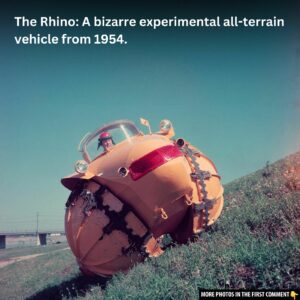In the world of automotive history, certain vehicles stand out not for their grandeur or luxury but for their ingenuity and the story they tell. The 1946 Brogan Doodlebug is one such vehicle—a small, unassuming car that left an indelible mark on the microcar movement and automotive design. Born from the creative mind of Frank Brogan, an inventor with a passion for compact machines, the Doodlebug captured the essence of practicality and resourcefulness in a time of great uncertainty. Despite its size, the Brogan Doodlebug is nothing short of a marvel, embodying a remarkable chapter in the history of transportation that continues to fascinate car enthusiasts and collectors alike.
The Origins of the Brogan Doodlebug
The story of the Brogan Doodlebug begins in the midst of World War II, during a time when resources were scarce, and the world was in turmoil. It was the perfect time for an inventor like Frank Brogan to make his mark. Operating his machine shop business, B&B Specialty Co., in Rossmoyne, Ohio, Brogan had already made a name for himself by creating various motorized vehicles, including scooters and even a folding-wing airplane. However, it was the Doodlebug, a tiny two-seat roadster designed specifically for women, that would become his most iconic creation.
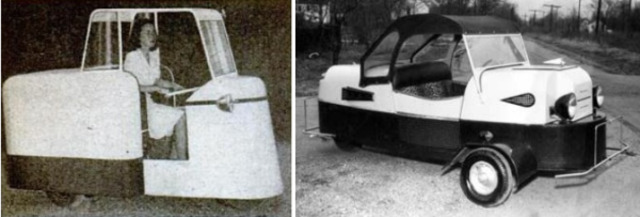
Brogan’s goal was clear: create a compact, affordable, and fuel-efficient vehicle that could meet the needs of people during the scarcity of wartime. The Doodlebug’s design was a departure from the traditional cars of the time, offering something practical without compromising on usability. Measuring just 96 inches in length and 40 inches in width, the Doodlebug was a sight to behold, but it was its simplicity and functionality that truly made it unique. With a wheelbase of only 66 inches and a curb weight of just 450 pounds, the Doodlebug was perfectly suited for those in need of an efficient, no-frills vehicle during challenging times.

Video
Watch this video to explore a huge collection of tiny cars and their incredible details!
Innovative Design and Engineering
What set the Brogan Doodlebug apart was not just its size but its innovative design. Using a three-wheeled chassis with a single wheel in the front, the car was engineered to turn within its own length, making it highly maneuverable. This feature was a significant design choice, offering both practicality and agility for urban environments. The rear-mounted engine, which could either be a Briggs & Stratton single or an Onan twin engine, delivered 10 horsepower, enough for a top speed of 45-50 mph. The Doodlebug’s ingenious design eliminated the need for a traditional transmission, using a centrifugal clutch of Brogan’s own design, which removed the requirement for a clutch pedal.
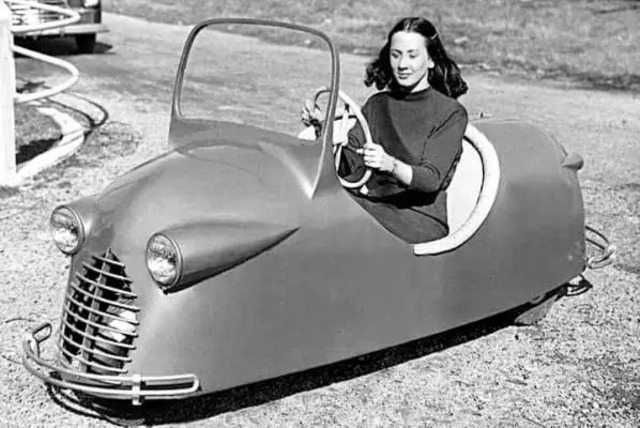
Another remarkable feature was its fuel efficiency. The Doodlebug could travel up to 70 miles on a single gallon of gas, making it an attractive option during the era of rationing. While the car was basic—lacking a top or side curtains—it provided just what was needed for transportation. This minimalist approach made it both affordable and functional, with a retail price of only $400, a bargain for the time. Unfortunately, Brogan’s dream of mass production was cut short when he found that he was losing money on each vehicle, halting production after only 30 units were made.
The Brogan Doodlebug’s Impact During Wartime
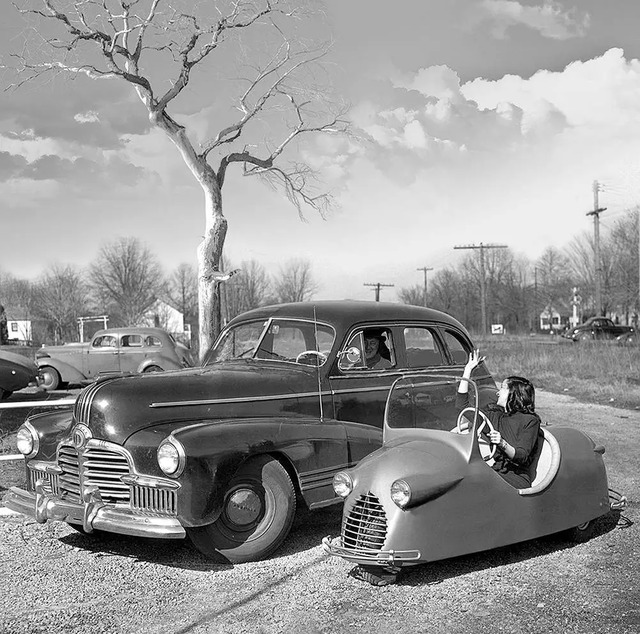
At the height of World War II, cars were in short supply, and resources were prioritized for military use. The Brogan Doodlebug entered the market at a time when personal transportation had become a luxury for most. The Doodlebug provided an affordable and practical alternative for individuals who needed a way to get around in a time of scarcity. Its compact size was ideal for those living in crowded cities or suburban areas where larger vehicles were often impractical.
While the Doodlebug may not have been a commercial success, it had a lasting impact on the automotive landscape. It was a solution to a very specific problem during wartime, offering an affordable vehicle for civilians when most automakers were focused on producing military vehicles. Its efficiency, design, and affordability set it apart from other vehicles of the time, and it paved the way for the development of microcars in the years that followed.
Brogan Doodlebug’s Legacy in the Automotive World
Although the Brogan Doodlebug was short-lived in terms of production, its legacy continues to resonate in the world of automotive design. The Doodlebug, with its compact size and innovative features, inspired a new wave of microcars that would emerge in the decades that followed. In the post-war period, the rise of suburban living and a growing desire for fuel-efficient vehicles led to a greater appreciation for smaller cars, and the Doodlebug’s influence can be seen in many of the microcars that followed, such as the BMW Isetta and the Fiat 500.
The Brogan Doodlebug’s unique blend of practicality and innovation made it a precursor to the microcar movement, which would dominate automotive trends in Europe and beyond during the mid-20th century. Even today, the Doodlebug stands as a symbol of adaptability and ingenuity, a testament to the creative spirit that defined the automotive industry in the face of adversity.
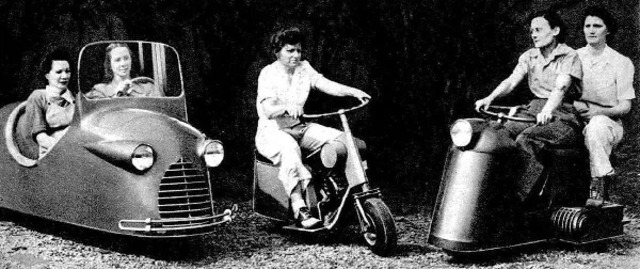
Brogan Doodlebug: Collectible and Cherished by Enthusiasts
In recent years, the Brogan Doodlebug has become a sought-after collector’s item. Restored models of the tiny car are a rare and prized find, cherished by enthusiasts who recognize its historical significance and the remarkable engineering that went into its design. These restored cars are not just vehicles; they are pieces of history, embodying the spirit of a bygone era and a reminder of the resilience and creativity that defined the 1940s.
Collectors and vintage car enthusiasts are drawn to the Doodlebug not only for its rarity but also for its connection to a time when innovation and practicality were at the forefront of automotive design. Each restored Doodlebug represents the triumph of an inventor’s vision, and the car’s continued popularity ensures that Brogan’s legacy will not be forgotten.
The Enduring Spirit of Brogan Doodlebug
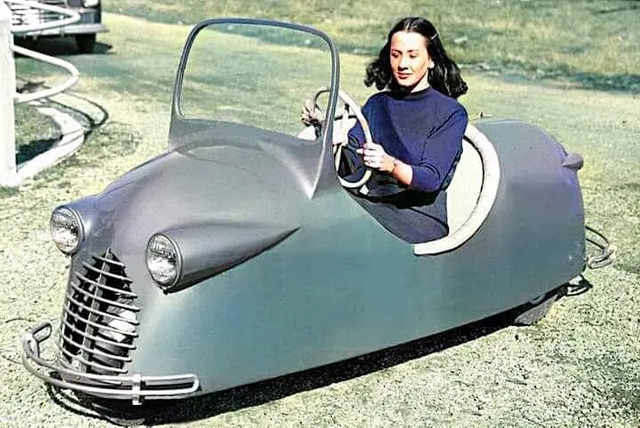
The story of the Brogan Doodlebug is one of perseverance and vision in the face of adversity. Born out of the challenges of wartime, this tiny car defied expectations with its innovative design and practical features. While the Doodlebug may have been small in size, its impact on the automotive world has been far-reaching, influencing future generations of microcars and inspiring car enthusiasts around the globe.
As time passes, the legend of the Brogan Doodlebug continues to captivate the imagination of those who appreciate the ingenuity and creativity behind its design. Today, it remains a cherished part of automotive history, a symbol of how even the smallest ideas can leave a lasting legacy.
Video
Watch this video to see the rare King Midget, a vintage 1960 micro car with a 10HP engine, reaching 50mph and 50mpg!
Conclusion: The Enduring Legacy of the Brogan Doodlebug
The Brogan Doodlebug is more than just a tiny car. It is a symbol of innovation, a piece of automotive history that represents the resilience of an inventor who dared to create something new in the face of adversity. Though it was produced in limited numbers and faced numerous challenges, the Doodlebug’s legacy lives on, inspiring car enthusiasts and collectors to appreciate the ingenuity that went into its creation. As we look back on the history of the Doodlebug, we are reminded that sometimes, the smallest ideas can have the most lasting impact on the world around us.



